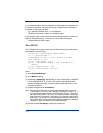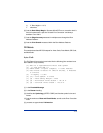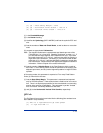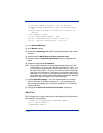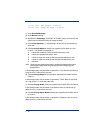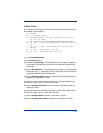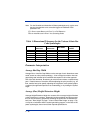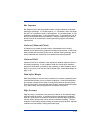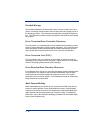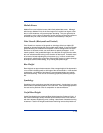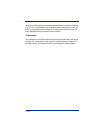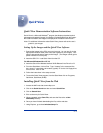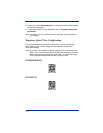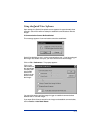
1 - 16
Note: For the Canadian and Australian 4-State symbologies only, any bar error
that has invoked their error correction triggers an additional PQA
parameter line:
"[F] < One or more Bars are in Error!" in a Full Report or
"One or more Bars are in Error!" in a Screening mode.
Parameter Interpretation
Average Bar/Gap Width
Average Bar or Inter-Bar Gap Widths are the average of such dimensions mea-
sured across an entire postal symbology. A low average bar width or inter-bar
gap width grade indicates print conditions that expand or shrink the apparent
size of the dark elements, threatening to make the narrow bars or spaces disap-
pear. Potential areas of correction include adjusting the print process (e.g., ink
flow, transfer heat, print speed), adjusting the original bar code symbol graphic
or pattern (through techniques such as undercutting), or by making the symbol
larger.
Average (Bar) Height/Extension Height
Average Height/Extension Height is a measure of the average height of the bars
or dark elements in a symbol. Depending on the symbology and print process,
this can be corrected by graphically stretching the symbol for 2D stacked sym-
bols (see "Row Height" on page 1-19 and "Useful Row Height" on page 1-19),
or may be an indication that the symbol generating program, in the case of the
postal symbologies, does not meet the required specifications.
Table 1: Dimensional Tolerances for the Various 4-State Bar
Code Symbologies
“Tall” Bar
Extensions
“Short” Bar
Extensions”
Bar Widths
Gap (Space)
Widths
British 2.16 - 2.92 mm 0.51 - 0.76 mm 0.38 - 0.63 mm 0.50 - 0.87 mm
Netherlands 2.16 - 2.92 mm 0.51 - 0.76 mm 0.38 - 0.63 mm 0.42 - 0.89 mm
Canadian 2.1 - 2.50 mm 0.25 - 0.40 mm 0.40 - 0.60 mm 0.40 - 0.76 mm
Japanese 1.70 - 1.80 mm 0.52 - 0.68 mm 0.50 - 0.70 mm 0.45 - 0.60 mm
Australian 2.10 - 2.90 mm 0.50 - 0.80 mm 0.40 - 0.60 mm 0.40 - 0.76 mm



